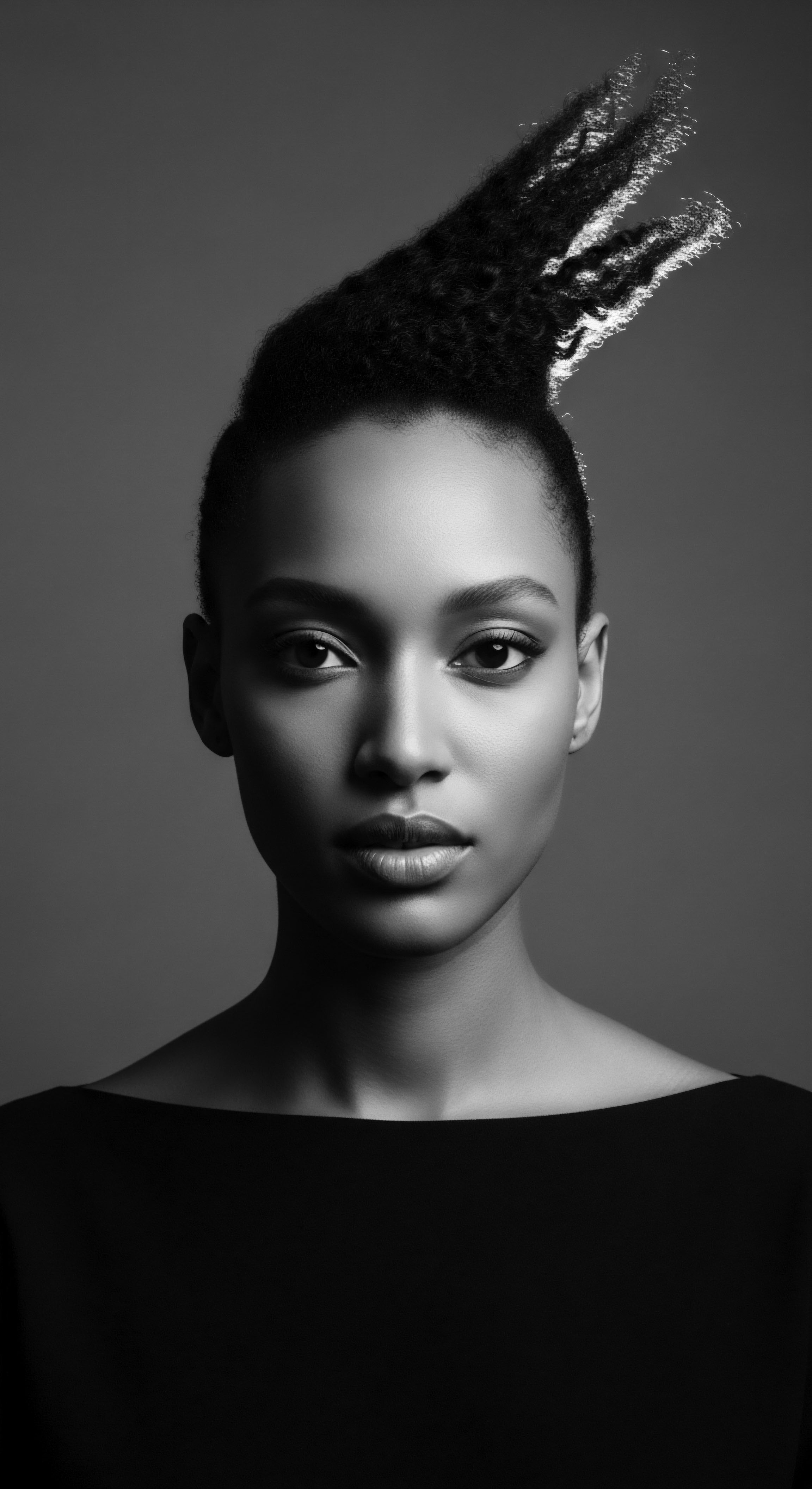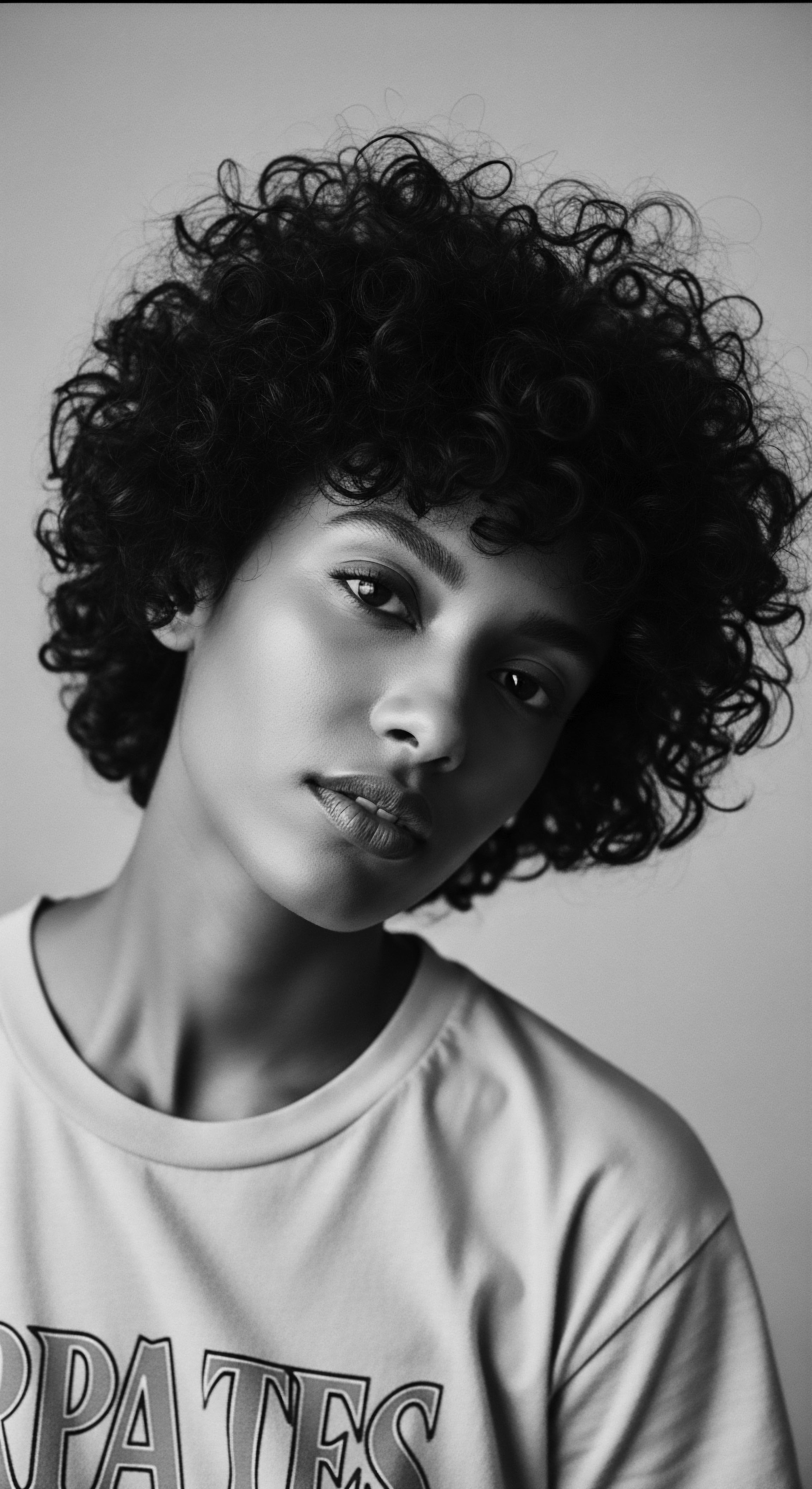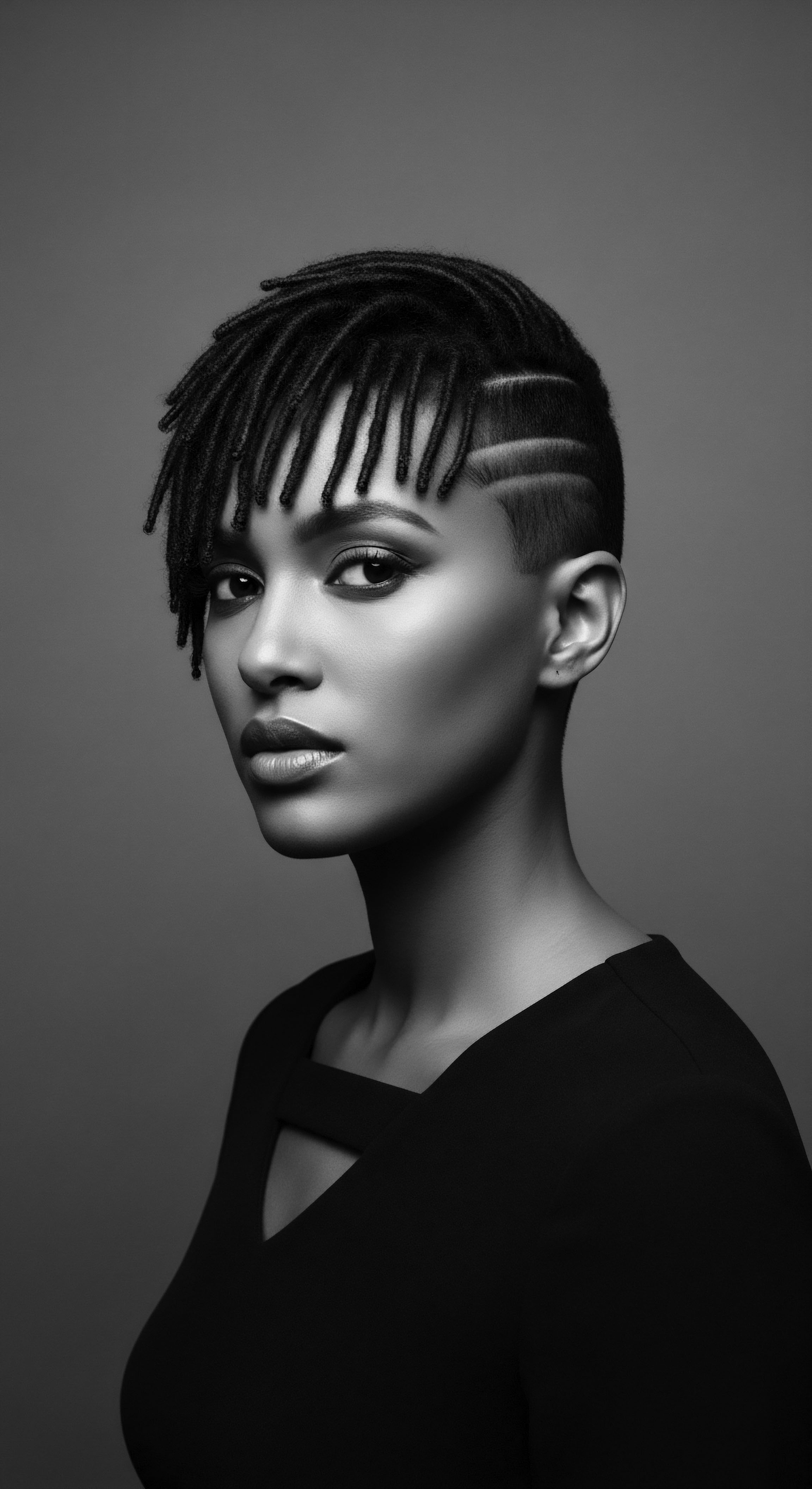
Fundamentals
Within Roothea’s ‘living library,’ the concept of The New Orleans represents far more than a geographical locale; it stands as a profound cultural crucible, a historical vortex where diverse streams of ancestral knowledge converged and transformed, particularly in the realm of textured hair heritage. This term signifies the unique, often defiant, genesis of Black and mixed-race hair practices that blossomed under extraordinary pressures in colonial and post-colonial Louisiana. It is an elucidation of how resilience, creativity, and identity became inextricably linked to the care and adornment of textured strands, offering a deeply rooted understanding of hair as a repository of collective memory and a testament to enduring spirit.
The meaning of The New Orleans in this context extends beyond simple definition, embodying a living legacy. It encompasses the intricate ways in which African, Indigenous, and European influences intermingled, giving rise to distinct hair traditions that spoke volumes about status, resistance, and belonging. This designation recognizes the city as a symbolic hearth where the elemental biology of textured hair met ancient practices, evolving into a unique lexicon of care. It is a statement that honors the ingenuity of those who, despite systemic attempts to erase their cultural markers, preserved and adapted their heritage through the very fibers of their being.
The New Orleans, within Roothea’s lexicon, is a testament to the powerful, defiant genesis of textured hair heritage born from a unique cultural convergence.

Echoes from the Source ❉ Ancestral Roots
The initial vibrations of The New Orleans resonate from the distant shores of Africa, where hair held spiritual, social, and aesthetic significance long before the transatlantic voyages. Across countless West African societies, hairstyles served as intricate communication systems, conveying marital status, age, lineage, and even one’s community standing. Braids, twists, and elaborately adorned coiffures were not mere aesthetic choices; they were profound cultural markers, meticulously crafted with deep understanding of hair’s inherent properties and its connection to identity.
Indigenous peoples of the Americas also carried their own distinct traditions of hair care and adornment, often tied to spiritual beliefs and their natural environment. When these diverse streams of ancestral wisdom met in the crucible of colonial Louisiana, they began a slow, yet potent, process of creolization, shaping what would become the distinctive character of The New Orleans.
The biological foundation of textured hair, with its unique follicular structure and curl patterns, played a central role in these early practices. African ancestral care rituals, informed by generations of observation, intuitively addressed the needs of these delicate strands, focusing on moisture retention, protective styling, and scalp health. Natural ingredients like shea butter, various plant oils, and herbal infusions were cornerstones of these routines, applied with a wisdom that modern science now often validates (Benzie et al.
2011). These practices were carried across the Middle Passage, often hidden within the very braids that marked escape routes or carried seeds for future sustenance, symbolizing an unbroken link to a forcibly severed past.

The Genesis of Adaptation
As enslaved Africans arrived in Louisiana, they brought with them not only their physical bodies but also an invaluable treasury of embodied knowledge concerning hair. Despite the brutal dehumanization of slavery, which often included forced shaving as a means of cultural erasure (Byrd & Tharps, 2001), the impulse to reclaim and express identity through hair persisted. The early colonial period saw the subtle re-establishment of these practices, often in clandestine ways, as a form of quiet resistance. The humid climate of New Orleans, while challenging, also allowed certain indigenous plants and adapted African botanicals to thrive, providing new resources for hair care.
The interaction with Indigenous populations and, to a lesser degree, European traditions, further shaped this nascent heritage. This period represents the elemental beginning of The New Orleans, a time when diverse biological and cultural strands began to intertwine, laying the groundwork for a truly unique hair identity. The struggle for self-expression through hair became a profound act of self-preservation.

Intermediate
Moving beyond the foundational elements, the intermediate understanding of The New Orleans reveals its historical role as a site of profound cultural synthesis and defiant beauty. This concept specifically delineates how the pressures of colonial society, particularly the Spanish rule in the late 18th century, paradoxically ignited an extraordinary flourishing of textured hair expression among Black and mixed-race women. It is an interpretation that foregrounds the dynamic interplay between oppression and artistic resistance, showcasing how external constraints catalyzed internal innovation.
The significance of The New Orleans in this context becomes particularly clear through the historical example of the Tignon Laws of 1786. Enacted by Spanish colonial Governor Esteban Miró, these laws mandated that free women of color in New Orleans wear a Tignon (a headwrap or kerchief) in public. The explicit intention was to suppress their perceived beauty and social influence, which reportedly attracted white men and challenged the established racial hierarchy (Walker, 2023; Duggins-Clay et al. 2025).
Free women of color, known for their elaborate and artistic hairstyles adorned with jewels and feathers, were seen as a threat to the social order (Nasheed, 2018). The law sought to mark them as part of the “slave class,” regardless of their free status (Duggins-Clay et al. 2025).
The Tignon Laws, intended to suppress the visible beauty of Black women’s hair, instead became a powerful catalyst for creative resistance and a symbol of enduring identity.

The Tender Thread ❉ Resistance and Adaptation
The response to the Tignon Laws exemplifies the heart of The New Orleans as a concept of cultural resilience. Instead of diminishing their presence, these women transformed the mandated headwraps into powerful statements of style and defiance. They used vibrant, luxurious fabrics, tying them with intricate knots and adorning them with feathers and jewels, thereby drawing even more attention to their beauty and ingenuity (New York Historical, n.d.; WLRN, 2015).
This act of subversion, turning a tool of oppression into an emblem of pride, speaks to the deep wellspring of creativity and determination within the community. The very act of covering their hair, meant to diminish, instead became a canvas for heightened artistic expression.
This period saw the evolution of traditional African head-wrapping techniques, which had already served diverse purposes from protection to spiritual observance, into a distinct Creole art form. The meaning embedded in these headwraps transcended mere fashion; they communicated an unspoken language of dignity, heritage, and an unwavering spirit in the face of adversity. This adaptation was not a surrender but a sophisticated reinterpretation, demonstrating a profound understanding of how to navigate and transform oppressive realities through cultural expression.

Styling as a Silent Language
The practices that solidified during this era, often passed down through familial lines and community networks, became integral to the living traditions of care.
- Headwrap Artistry ❉ The manipulation of textiles into complex sculptures, often using madras fabric, became a signature style.
- Protective Coiffures ❉ Underlying the tignons, traditional braiding and twisting patterns continued to protect textured hair, preserving ancestral methods.
- Herbal Infusions ❉ Knowledge of local and imported botanicals for scalp health and hair conditioning persisted, demonstrating continuity with African ethnobotanical wisdom.
This period of The New Orleans also highlights the role of hair as a medium for identity construction in a society obsessed with racial classification. For free people of color, hair and its presentation were critical in navigating their precarious social standing, constantly negotiating between European beauty standards and ancestral aesthetics (Hanger, 1997). The resilience displayed during this era cemented the idea of hair as a powerful symbol of self-determination.

Academic
From an academic vantage, The New Orleans is precisely defined as a socio-cultural phenomenon rooted in the colonial and antebellum periods of Louisiana, specifically identifying it as the unique historical and adaptive space where the biological particularities of textured hair intersected with enforced cultural suppression and resilient Black and mixed-race agency, culminating in distinct hair aesthetics and care practices that profoundly shaped diasporic identity. This delineation moves beyond anecdotal observation, positing that the specific legal, economic, and demographic conditions of New Orleans fostered a singular environment for the evolution of hair heritage, offering a compelling case study in cultural persistence and resistance. The academic interpretation emphasizes the intricate interplay of power dynamics, racial stratification, and creative subversion that transformed hair from a biological attribute into a potent socio-political statement.
This academic lens allows for an in-depth examination of how external pressures, such as the Spanish colonial government’s Edict of Good Government of 1786—commonly known as the Tignon Laws—did not merely regulate appearance but attempted to reify a racial hierarchy through visual markers. These laws, which required free women of color to cover their hair with a simple kerchief, were a direct assault on their public presentation, aiming to diminish their social standing and perceived attractiveness to white men (Byrd & Tharps, 2001; Duggins-Clay et al. 2025). Yet, the historical outcome was a testament to the ingenuity and defiance of these women.
Rather than conforming to the intended humiliation, they transformed the tignon into an elaborate, fashionable statement, often adorned with jewels, ribbons, and costly fabrics, effectively subverting the law’s intent and making their covered heads even more striking (New York Historical, n.d.; WLRN, 2015). This strategic reinterpretation, a form of sartorial semiotics, communicated an unbroken spirit and an assertion of self that transcended the imposed restrictions.
The implications of The New Orleans for understanding human resilience are profound. It highlights how aesthetic practices, often dismissed as superficial, can serve as critical sites of resistance and identity formation in oppressive regimes. The systematic attempt to control Black bodies and expressions, extending to hair, met with a counter-movement of cultural innovation.
This instance provides a rigorous data point for studies in cultural anthropology and sociology, demonstrating how marginalized communities adapt and reinterpret dominant cultural symbols to maintain their own sense of worth and communal cohesion. The enduring legacy of the tignon, which persisted as a popular style long after the laws were repealed, underscores its significance as a symbol of power and pride (African American Museum of Iowa, n.d.).

The Unbound Helix ❉ Legacy and Modern Resonance
The enduring meaning of The New Orleans is not confined to historical archives; its influence continues to ripple through contemporary textured hair movements. The spirit of defiance and creative adaptation born from this historical crucible finds modern echoes in the natural hair movement, which similarly reclaims Afro-textured hair from Eurocentric beauty standards. The historical struggle against hair discrimination, vividly illustrated by the Tignon Laws, resonates with current legislative efforts like the CROWN Act, which seeks to ban discrimination based on hair texture and protective styles (Walker, 2023). This continuity underscores the long-term consequences of historical policies on self-perception and societal acceptance.
The scientific understanding of textured hair, particularly its unique coiling patterns and susceptibility to dryness and breakage, offers a complementary perspective. Traditional care practices, refined within the context of The New Orleans, often involved protective styling, consistent moisturizing, and the use of natural emollients. These practices, developed through generations of empirical observation, align remarkably with modern trichological recommendations for maintaining the health and integrity of textured strands. This convergence of ancestral wisdom and contemporary science lends a powerful authority to the historical methods, validating their efficacy and relevance.
Consider the ongoing discourse surrounding hair discrimination in professional and educational settings. A study published in 2019 found that 45% of Black women reported avoiding physical exercise for fear of “messing up” their hair, and 22% felt their hair prevented them from maintaining a healthy weight, pointing to broader health implications tied to societal hair biases (Harley et al. 2009). This statistic illuminates a direct, modern consequence stemming from historical precedents like the Tignon Laws, where the perceived “unruliness” of Black hair was weaponized.
The resistance shown in The New Orleans, transforming a restrictive mandate into an expressive art form, serves as a powerful historical counter-narrative to such contemporary challenges. It provides a blueprint for cultural agency in the face of persistent prejudice, affirming the deep connection between hair, identity, and wellbeing.
| Historical Practice/Element Tignon Headwraps |
| Ancestral Wisdom & Cultural Significance A defiant reinterpretation of oppressive laws, transforming forced covering into a symbol of beauty, status, and resistance for free women of color. Provided physical protection for hair from elements. |
| Modern Scientific Understanding/Validation While a social construct, the practice inadvertently offered protective styling benefits, shielding delicate textured strands from environmental damage and reducing manipulation, promoting length retention. |
| Historical Practice/Element Protective Braiding & Twisting |
| Ancestral Wisdom & Cultural Significance Carried from West African traditions, these styles communicated identity, status, and group affiliation. They were practical for managing hair during labor and maintaining hygiene. |
| Modern Scientific Understanding/Validation Reduces tangling, minimizes breakage by limiting daily manipulation, and helps retain moisture. Modern hair science recognizes these as essential for the health of highly coiling hair. |
| Historical Practice/Element Use of Natural Oils & Butters |
| Ancestral Wisdom & Cultural Significance African and Indigenous communities utilized local plant-based emollients (e.g. shea butter, palm oil) for moisture, shine, and scalp health, often infused with herbs. |
| Modern Scientific Understanding/Validation Emollients provide a lipid barrier, sealing in moisture and reducing transepidermal water loss from the hair shaft. Many traditional oils contain fatty acids and vitamins beneficial for scalp and hair health. |
| Historical Practice/Element Community Hair Rituals |
| Ancestral Wisdom & Cultural Significance Hair care was often a communal activity, fostering intergenerational knowledge transfer and social bonding, especially among enslaved and free Black women. |
| Modern Scientific Understanding/Validation The communal aspect provided psychological and social support, reinforcing cultural identity and reducing feelings of isolation, contributing to holistic wellbeing alongside physical hair care. |
| Historical Practice/Element These practices, born from necessity and ingenuity in The New Orleans, illustrate a profound, often intuitive, alignment between ancestral wisdom and contemporary hair science, affirming the deep historical roots of effective textured hair care. |
The meaning of The New Orleans also extends to the very nomenclature used within textured hair communities. Terms like “good hair” and “bad hair,” products of the colonial mindset that denigrated Afro-textured hair, were challenged and subverted by the self-affirming styles of the era. The very act of styling hair, whether openly or covertly, became a reaffirmation of personhood in a system that sought to deny it.
The city served as a vital cultural exchange point, not only for people but for botanical knowledge, culinary traditions, and, crucially, hair practices that were adapted and preserved (Wilson Center, n.d.). This blending created a distinctive Creole identity, where African, French, and Spanish influences were re-imagined and re-articulated through every aspect of daily life, including hair.
The academic analysis of The New Orleans reveals a powerful truth ❉ that even in the face of profound systemic oppression, human creativity and the deep-seated need for identity expression find avenues for manifestation. The textured hair of Black and mixed-race women in New Orleans became a canvas for this expression, a site of continuous negotiation between imposed norms and inherent cultural pride. The historical example of the Tignon Laws is not merely a footnote; it is a central chapter in the larger narrative of hair politics and the enduring spirit of Black womanhood across the diaspora. This deep exploration uncovers the complex layers of meaning embedded within each coil and strand, affirming their enduring significance.

Reflection on the Heritage of New Orleans
As we draw this meditation to a close, the concept of The New Orleans within Roothea’s ‘living library’ stands as a luminous testament to the indomitable spirit woven into every strand of textured hair. It is a resonant narrative, echoing across centuries, that speaks to the profound wisdom embedded in ancestral practices and the defiant beauty born from crucible moments. The heritage of New Orleans, particularly as it relates to Black and mixed-race hair experiences, offers more than historical data; it presents a living blueprint for resilience, a soulful guide for understanding identity, and a vibrant affirmation of self-worth.
The story of the tignon, born from an attempt to suppress, yet transformed into an emblem of regal resistance, serves as a poignant reminder that true beauty and strength reside not in conformity, but in the authentic expression of one’s heritage. This legacy, passed down through generations, invites us to recognize our hair not simply as a biological feature, but as a sacred extension of our lineage, a continuous thread connecting us to those who came before. It is a call to honor the ingenious adaptations, the quiet rebellions, and the vibrant celebrations that shaped textured hair culture in this unique American city.
The heritage of New Orleans reminds us that textured hair is a sacred extension of lineage, embodying resilience and defiant beauty.
Roothea’s ethos encourages us to perceive the past not as a static collection of events, but as a dynamic source of wisdom that informs our present and guides our future. The historical journey of hair in New Orleans, from the elemental whispers of African traditions to the bold statements of Creole artistry, provides a profound understanding of how identity is forged, maintained, and celebrated through tangible practices. It beckons us to approach our own hair care with reverence, recognizing the echoes of ancestral hands and the whispers of ancient knowledge in every gentle touch and conscious choice.
Ultimately, The New Orleans is a symbol of triumphant cultural continuity. It reminds us that our textured hair carries not only genetic codes but also the vibrant stories of survival, creativity, and unapologetic self-expression. As we tend to our coils, curls, and waves, we are participating in an ongoing ritual of remembrance, affirming the beauty of our heritage and stepping into the unbound helix of a future where every strand tells a story of enduring grace.

References
- African American Museum of Iowa. (n.d.). History of Hair.
- Benzie, I. F. F. & Wachtel-Galor, S. (Eds.). (2011). Herbal Medicine ❉ Biomolecular and Clinical Aspects. CRC Press.
- Byrd, A. D. & Tharps, L. L. (2001). Hair Story ❉ Untangling the Roots of Black Hair in America. St. Martin’s Griffin.
- Duggins-Clay, P. Lyons, M. & Ryan, T. (2025, February). Confronting Hair Discrimination in Schools – A Call to Honor Black History by Protecting Student Rights. IDRA Newsletter.
- Hanger, K. S. (1997). Bounded Lives, Bounded Places ❉ Free Black Society in Colonial New Orleans, 1769-1803. Duke University Press.
- Harley, A. E. Odoms-Young, A. Beard, B. et al. (2009). African American social and cultural contexts and physical activity ❉ strategies for navigating challenges to participation. Women & Health, 49(1), 84-100.
- Nasheed, J. (2018, April 10). When Black Women Were Required By Law to Cover Their Hair. VICE.
- New York Historical. (n.d.). Fashionable Rebellion – Women & the American Story.
- Walker, E. (2023, August 3). It’s Time for a Federal Ban on Hair Discrimination. EdTrust.
- Wilson Center. (n.d.). Place, Identity, and Urban Culture ❉ Odesa and New Orleans.
- WLRN. (2015, July 24). African-Inspired Headwraps Evoke Pride, Rooted In History.
